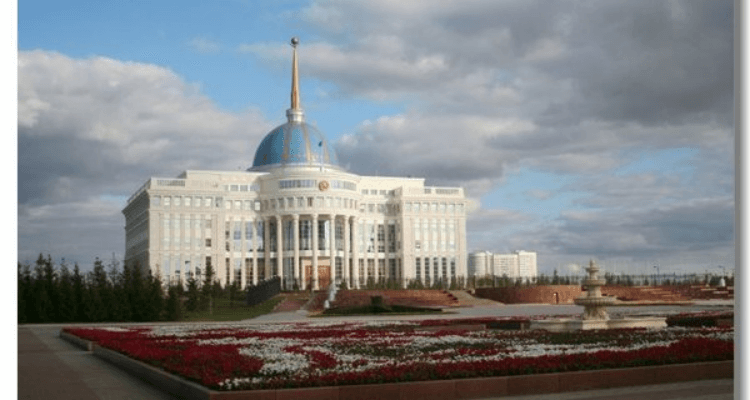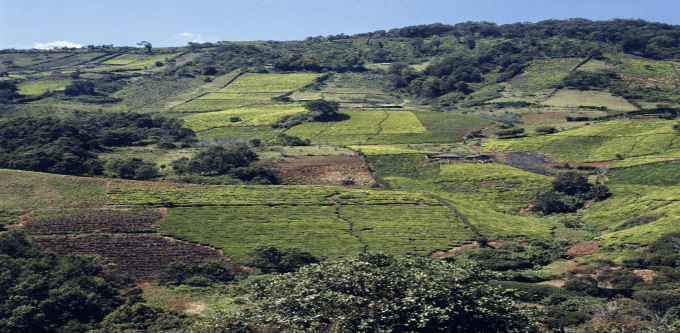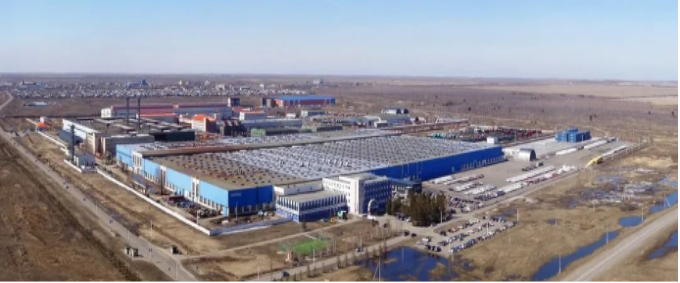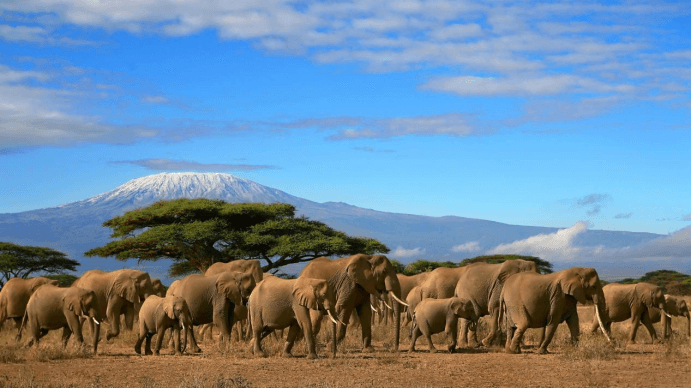

Investment Report on the Tourism Industry of Kazakhstan 2025-2028
Investment Report on the Tourism Industry of Kazakhstan 2025-2028
Golden Compass Go-Global Consulting

Special Statement
Each report embodies the professional judgment and rigorous verification of the analysts. This sample is for reference only. Please refer to the final approved version.
Report Price: 9800 yuan
|
service quotation |
Notes |
||
|
Standard Version |
Standard report module and data summary. It is suitable for small and medium-sized enterprises and individual business owners. |
9800 ¥ |
|
|
Partial customization |
Industry overview analysis, risk assessment, partial customization (2 persons * 2 weeks) |
(Industry/Country) 98,000+ |
No travel expenses included. |
|
Consult for customization |
Customized consulting for enterprise investment in a certain country's industry, including in-depth research, production analysis, and action plan (3 people * 4 weeks) |
(Industry/Country) 450,000+ |
Include travel expenses |
Industry Summary: Current Situation of the Tourism Industry
Tourist Reception Volume and Source Markets
- International Tourists: In 2023, Kazakhstan received 9.6 million foreign tourists, doubling the number compared to 2022. From January to October 2024, the number of Chinese tourists reached 550,000, and by the end of November, it increased to 605,000 (a year-on-year increase of 65%).
- Main Source Markets: China, Russia, Uzbekistan, etc. Chinese tourists showed the fastest growth rate. In 2023, the number of Chinese tourists visiting Kazakhstan was 217,000, and it increased to 650,000 in 2024.
- Domestic Tourists: In 2023, the number of domestic tourists in Kazakhstan reached 9.6 million, an increase of 1 million compared to the previous year.
Tourism Revenue and Consumption Structure
- Revenue Scale: In 2023, the output value of tourism services was 229 billion tenge (approximately US$438 million), and the tax revenue was 450 billion tenge (approximately US$860 million).
- Consumption by Chinese Tourists: The average consumption per Chinese tourist was about US$1,000, and 57% of them preferred to pay in cash. They contributed more than US$500 million in revenue throughout the year.
Market Demand
- Product Types: Natural landscapes (such as the alpine lakes in Almaty), cultural heritages (such as the ancient city of Taraz), skiing tourism (plans to build a skiing resort), and business tourism (such as oil exhibitions, etc.).
- Demand from the Chinese Market: Mainly business tours, self-driving tours, and cultural experience tours. In 2024, travel agencies launched the high-end route of "Silk Road Central Asia" (with a price of 16,000 to 25,000 yuan per person).
Tourism Resources and Unique Advantages
- Natural and Cultural Heritages
- Natural Landscapes: The mountains, lakes (such as Issyk Lake), grasslands around Almaty, and the Karakum Desert, etc.
- Cultural Heritages: The ancient city ruins along the Silk Road (such as Taraz), and the World Heritage city (such as Samarkand). Kazakhstan was recommended as the "Best Travel Country in 2025" in international travel guides.
- Policy and Geographical Location Advantages
- Geographical Location: Connecting Europe and Asia, it is a hub of the Belt and Road Initiative. It has convenient land and air transportation with Xinjiang, China (with 43 direct flights per week).
- Visa Facilitation: China and Kazakhstan have a mutual visa exemption policy (14-day visa-free stay), which promotes the growth of tourists.
Investment Value and Policy Support
- Investment Scale and Returns
- Government Objectives: It plans to make the tourism industry account for 8% of the GDP by 2025 and attract an investment of 6.9 trillion tenge (approximately US$13.2 billion).
- Private Capital: From 2020 to 2022, the investment in the tourism industry exceeded US$4 billion, and more than 400 tourism facilities (such as ski resorts, hotels, etc.) were built.
- Policy Incentives
- Tax Preferences: Enterprises in tourism centers enjoy a 90% reduction in land tax; loan grace periods and subsidies are provided.
- International Cooperation: China and Kazakhstan have signed more than 200 tourism agreements and held "Tourism Year" activities (such as the "Kazakhstan Tourism Year in China" in 2024).
- Key Enterprises and Cooperation
- Chinese Enterprises: Participated in infrastructure projects such as the Samarkand International Convention and Exhibition Center; platforms like Ctrip and Qunar have launched tourism routes in Central Asia.
- Local Enterprises: The Kazakhstan National Tourism Company and the Atameken Entrepreneurs Association promote cross-border tourism cooperation.
Current Situation of Infrastructure and Services
- Transportation and Accommodation
- Aviation: There are 43 flights per week between China and Kazakhstan, covering cities such as Beijing and Urumqi.
- Railway and Road: The government plans to upgrade the railway network and open more tourist special trains.
- Hotel Construction: Uzbekistan has provided a subsidy of US$100 million for hotel construction; Kazakhstan still needs to improve high-end accommodation facilities.
- Service Shortcomings
- Language Barriers: There is a lack of Chinese signs and services at the airport, and there is a shortage of tour guide talents.
- Inadequate Supporting Facilities: Transportation in remote areas is inconvenient, and accommodation is in short supply during the peak tourist season.
Investment Risk Assessment and Challenges
- Risk Factors
- Infrastructure Lag: The transportation and accommodation in some regions do not meet international standards, affecting the tourist experience.
- Market Competition: Other Central Asian countries (such as Uzbekistan) are accelerating their efforts to compete for Chinese tourists.
- Geopolitical Factors: The slowdown of the global economic recovery and regional instability may affect investment confidence.
- Development Prospects
- Growth Potential: The "China Tourism Year" in 2025 is expected to further boost the growth of tourists; emerging fields such as skiing and eco-tourism have great potential.
- Policy Dividends: The government has listed the tourism industry as a key area for economic diversification and plans to build five major tourism clusters (such as Nur-Sultan, Almaty, etc.).
Conclusion
The tourism industry in Kazakhstan is in a period of rapid growth. With its rich natural resources, cultural heritages, and policy support, it has become one of the most promising tourism markets in Central Asia. However, inadequate infrastructure and service shortcomings are still the main restrictive factors. Investors can pay attention to ski resorts, high-end hotels, and cross-border tourism cooperation projects. It is expected that in the next five years, the tourism industry will become an important pillar of Kazakhstan's economic transformation, and the cooperation between China and Kazakhstan will further tap the market potential.For further details, please refer to the latest industry report from Golden Compass Go-Global Consulting.
Table of Contents
Overview of the Tourism Industry in Kazakhstan
1.1 Development History and Current Situation
1.1.1 Historical Development Trajectory
1.1.2 Current Industry Scale and Growth Trend
1.2 Distribution and Characteristics of Tourism Resources
1.2.1 Natural Tourism Resources (Mountains, Lakes, Grasslands, etc.)
1.2.2 Cultural Tourism Resources (Historical Relics, Cultural Festivals, etc.)
1.3 Structure of the Tourism Market
1.3.1 Scale and Characteristics of the Domestic Tourism Market
1.3.2 Main Source Markets and Tourist Preferences in the Inbound Tourism Market
1.3.3 Development of the Outbound Tourism Market
Analysis of the Investment Environment for the Tourism Industry in Kazakhstan
2.1 Policy Environment
2.1.1 Interpretation of Tourism-related Policies and Regulations
2.1.2 Support and Incentive Measures for the Tourism Industry by the Government
2.2 Economic Environment
2.2.1 Macroeconomic Situation and Its Impact on the Tourism Industry
2.2.2 Status and Contribution of the Tourism Industry to the National Economy
2.3 Social and Cultural Environment
2.3.1 Influence of Local Social and Cultural Customs on Tourism
2.3.2 Analysis of the Population Structure and Tourism Consumption Capacity
2.4 Infrastructure Environment
2.4.1 Transportation Infrastructure (Aviation, Railways, Highways, etc.)
2.4.2 Accommodation Facilities (Star-rated Hotels, Homestays, etc.)
2.4.3 Supporting Tourism Facilities (Catering, Entertainment, etc.)
Investment Opportunities and Potential Exploration in the Tourism Industry of Kazakhstan
3.1 Investment Opportunities in Emerging Tourism Markets
3.1.1 Ecotourism (Development of National Parks and Nature Reserves)
3.1.2 Cultural Tourism (Restoration and Development of Historical Sites)
3.1.3 Business Tourism (Construction and Operation of Convention and Exhibition Facilities)
3.2 Potential Brought about by the Integration and Upgrading of Tourism Resources
3.2.1 Joint Development of Regional Tourism Resources
3.2.2 Innovation of Tourism Products and Brand Building
3.3 Investment Opportunities Arising from International Cooperation and Exchanges
3.3.1 Cross-border Tourism Cooperation Projects
3.3.2 International Tourism Investment Cooperation Platforms
In-depth Analysis of Successful Investment Cases in the Tourism Industry of Kazakhstan
4.1 Successful Investment Projects in Kazakhstan by Foreign Enterprises
4.1.1 Introduction to the Project Background and Investment Entities
4.1.2 Project Operation Mode and Profit Situation
4.1.3 Driving Effect of the Project on the Local Tourism Industry
4.2 Successful Cases of Local Tourism Enterprises in Kazakhstan
4.2.1 Development History and Strategic Layout of the Enterprises
4.2.2 Analysis of the Core Competitiveness of the Enterprises
4.2.3 Market Influence and Development Prospects of the Enterprises
Challenges and Risk Assessment for Investment in the Tourism Industry of Kazakhstan
5.1 Challenges
5.1.1 Financial and Technical Bottlenecks in the Construction of Tourism Infrastructure
5.1.2 Shortage of Tourism Talents and Imperfect Training System
5.1.3 Intensified Competition in the Tourism Market (Competition from Neighboring Countries, etc.)
5.2 Investment Risks
5.2.1 Policy Risks (Policy Changes, Regulatory Adjustments, etc.)
5.2.2 Economic Risks (Exchange Rate Fluctuations, Economic Recessions, etc.)
5.2.3 Natural Risks (Damage to Tourism Facilities Caused by Natural Disasters, etc.)
5.2.4 Social and Cultural Risks (Cultural Conflicts, Social Instability, etc.)
Investment Strategies and Risk Response Plans
6.1 Investment Strategies
6.1.1 Project Selection Strategies (Based on Market Demand and Resource Advantages)
6.1.2 Selection of Investment Scale and Timing
6.1.3 Selection of Cooperation Modes (Joint Ventures, Wholly-owned Enterprises, Mergers and Acquisitions, etc.)
6.2 Risk Response Suggestions
6.2.1 Measures to Deal with Policy Risks (Strengthen Policy Research, Establish Communication Mechanisms)
6.2.2 Methods to Deal with Economic Risks (Risk Management, Diversified Investment)
6.2.3 Means to Deal with Natural Risks (Insurance, Emergency Response Plans, etc.)
6.2.4 Strategies to Deal with Social and Cultural Risks (Cultural Integration, Community Participation, etc.)
Conclusions and Future Prospects
7.1 Summary of Research Conclusions
7.1.1 Advantages and Disadvantages of Investment in the Tourism Industry of Kazakhstan
7.1.2 Comprehensive Assessment of Investment Opportunities and Risks
7.2 Future Development Prospects
7.2.1 Forecast of the Development Trend of the Tourism Industry in Kazakhstan
7.2.2 Suggestions and Prospects for Investors
References
Literature and Materials Cited in this Report
 The Golden Compass is the preferred choice for going to sea!
The Golden Compass is the preferred choice for going to sea! 
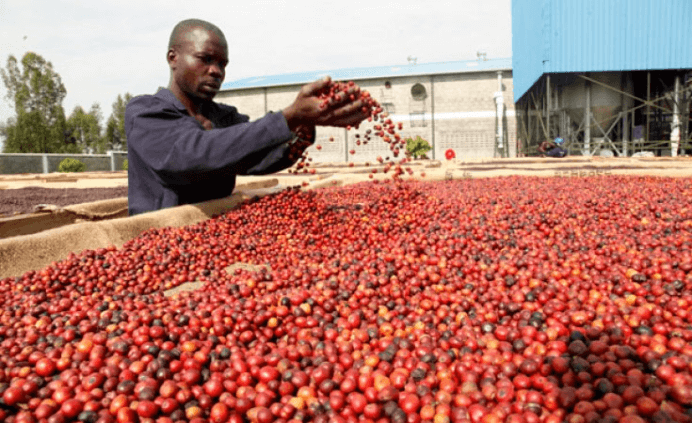
 9800
9800 